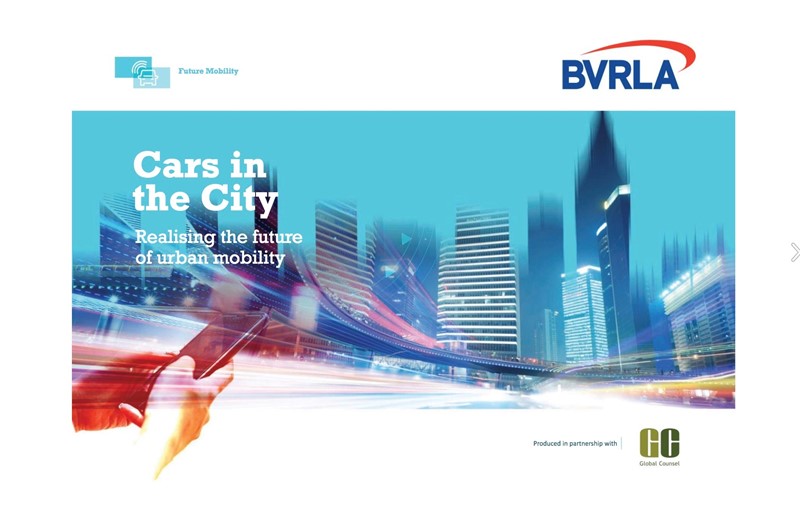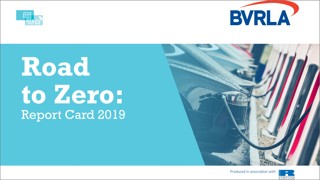The much-vaunted Road To Zero initiative set out by the Government is as vital as it is noble. According to Defra’s Joint Air Quality Unit (JAQU), air pollution is the largest environmental health risk in the UK. Indeed, the Committee on the Medical Effects of Air Pollutants estimates that air pollution causes 28,000 to 36,000 deaths a year in the UK.
However, the reality of Whitehall’s ambition to see at least half of new cars to be ultra-low emission by 2030 is that the journey towards that goal is far from straightforward.
Air quality was among a host of issues discussed by a diverse range of industry experts gathered to speak at this year’s inaugural BVRLA (British Vehicle Rental & Leasing Association) Future Mobility Congress. Included among the topics was the trade body’s own Road To Zero: Report Card 2019.
The report analyses the readiness of the fleet sector to transition to ultra-low emission vehicles and recommends where further Government action may be required. Progress is assessed in five key areas: policy measures, tax benefits, new vehicles, charge points and user sentiment.
POLICY MEASURES
Policy around EV take up can broadly be divided into supply and demand, according to Denis Naberezhnykh, technical director sustainable transport, Ricardo. He feels that, although not perfect, policies in the UK regarding demand are actually “pretty good”. Supply is where it falls short.
As internal combustion engine (ICE) vehicle production falls and EV production ramps up, the UK is going be to one in a long line of countries clamouring for a limited supply of EVs.
“We are going to be among many countries trying to get access to what’s going to be actually a very limited supply of electric and low emission vehicles for the foreseeable future. It’s limited for a number of reasons, but there are real constraints around the supply chain,” says Naberezhnykh.
“I think there are policies that can be put in place that will encourage the sale and manufacture of vehicles in the UK, which will essentially allow us to out-compete other countries who also want those same vehicles in the same timeframe.”

TAX BENEFITS
Mark Gallagher, green fleet specialist, Grosvenor Leasing, says the delay in clarity on BIK rates plus a number of changes to the landscape over recent years, have combined to erode trust.
“A lot of drivers are still struggling to fully adopt and embrace a ULEV or EV and there’s still an amount of uncertainty and lack of trust with the company car tax system with the changes we’ve seen in the past few years. The proposed removal of the diesel supplement, which became an increase to 4% from 3%, has eroded confidence with drivers out in the market,” Gallagher says.
NEW VEHICLES
According to BVRLA public affairs manager Rachael Hewish: “There are some serious issues with supplies and long lead-in times; it’s something we’re hearing over and over again.”
Naberezhnykh says supply chains will need to accelerate considerably to meet demand.
“There is a very clear commitment from automotive manufacturers and their supply chains to ramp up significantly their commitments to electrification,” he says.
“Some of the challenges will come back to the practical limitations of having the right supply chain built up quickly enough.”
EV supply is already a consideration for Suzanne Phillips, fleet consultant, Hitachi Capital Vehicle Solutions. HCVS is one of eight partner organisations participating in the Office of Gas and Electricity Markets (Ofgem)-funded Optimise Prime project, which requires 3,000 commercial EVs.
“Vehicle supply is absolutely critical for this project. We need to get those 3,000 vehicles on the road by the end of 2020. I think we would expect manufacturers to start the supply of EVs in January next year, but we also understand that it’s easier for them to deploy those outside the UK rather than within the UK,” says Phillips.
CHARGE POINTS
Interoperability and meeting demand are key issues when it comes to EV charging infrastructure. Western Power Distribution’s One Nation project tracked and monitored almost 700 EV users to gain insight on their vehicle use and charging behaviour.
Jonathan Berry, innovation manager at Western Power Distribution, says: “What’s really important is what that energy flow is going to look like. Regarding charge point infrastructure, from our point of view, it’s (about) understanding when they’re available.”
SENTIMENT
Real-time data on charge point availability and condition will also be vital to ensure the viability of mass EV adoption and increase driver appetite and trust.
As Mark Gallagher of Grosvenor Leasing says: “The main thing we hear on a regular basis is about a lack of standardised infrastructure. On top of that there is a certain amount of anxiety, because we have been so conditioned to a five minute ‘recharge’ if you will, to refuel to get our range back.
“There are a lot of drivers who still can’t quite get their heads around the idea that they will buy their next vehicle and it will have a range of 200, 250, or 300 miles… ‘what if’ they need to go 400 miles?”
CARS IN THE CITY
 The BVRLA chose the Future Mobility Congress to launch its Cars in the City report. It is the result of extensive consultation with private sector mobility providers, local and combined authorities, central government policymakers, academics, transport stakeholder groups and industry specialists.
The BVRLA chose the Future Mobility Congress to launch its Cars in the City report. It is the result of extensive consultation with private sector mobility providers, local and combined authorities, central government policymakers, academics, transport stakeholder groups and industry specialists.
Cars in the City makes 11 recommendations to national and local policymakers. These include policy leadership, clean air zones, spending, taxation, mobility data, parking, knowledge-sharing, urban mobility taskforces, planning, and electric vehicles.
The take-home message is quite simply: if you are not part of the solution, you are part of the problem…
To download a copy of the 32-page report, visit here.




















Login to comment
Comments
No comments have been made yet.